Creating a new protected area takes time. The members of the Velondriake locally managed marine area (LMMA) management association in southwest Madagascar have been patiently biding theirs for a number of long years. The seven-year journey towards formal government recognition of their protected area has seen a protracted political crisis, two tropical cyclones, coral bleaching events, and countless administrative hurdles. So it’s perhaps not surprising that when Velondriake’s community leaders heard the announcement that their LMMA was to receive permanent designation as a “New Protected Area” (Nouvelle Aire Protégée / NAP), they preferred to wait until they had a copy of the stamped, signed Decree in their hands to hold celebrations.
Now the i’s have been dotted, the t’s crossed and we finally have it: a definitive protected area with a formal Decree establishing the activities that are allowed and those that are forbidden within its boundaries.
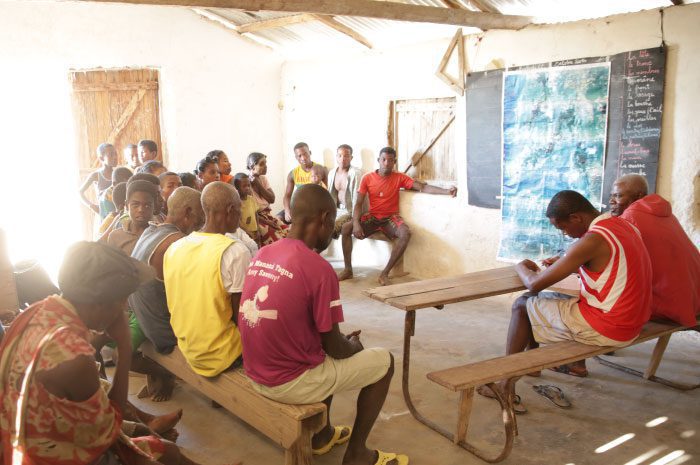
One of many community meetings | Photo – Gabriel Diamond
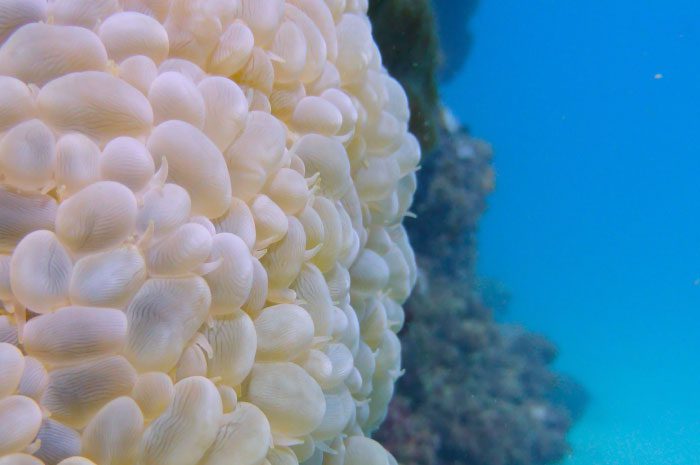
Bubble coral in Velondriake LMMA | Photo – Lisa Benson
[Tweet “Velondriake is part of the first wave of co-managed MPAs in Madagascar”]
Velondriake is part of the first wave of co-managed MPAs in Madagascar, along with four other sites supported by partner NGOs. These protected areas contribute to Madagascar realising its bold vision for community-led conservation set out at the 2003 World Parks Congress in Durban that led to the creation of more than 50 New Protected Areas, managed in collaboration with local communities.
For the Velondriake Association and Blue Ventures, joint managers of the Velondriake NAP, this achievement sparks a mix of relief and pride, along with an awareness of the responsibility in our hands, and the challenges that lie ahead…
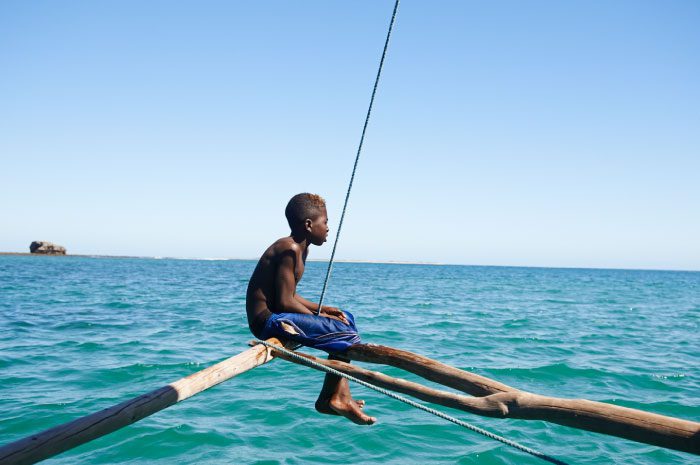
There has been a lot of waiting on the journey to official designation | Photo – Ben McMahon
A Protected Area by any other name…
What is crucial is that communities are empowered to make decisions and implement them. A formally gazetted protected area is not the only way for coastal communities to manage their waters and fisheries. The term locally managed marine area was developed in the Pacific to recognise efforts led by communities to manage marine resources, and LMMAs around the world encompass diverse types of governance and partnerships between communities, commercial operators, government and NGOs depending on the context. What is crucial is that communities are empowered to make decisions and implement them.
In Madagascar, three practical factors combine to mean that the most feasible option for large-scale natural resource management is to place this in the hands of local communities: a large proportion of the country depend directly on natural resources for their livelihoods and wellbeing; there is chronic poor infrastructure in rural areas; and, despite considerable progress, state institutions still lack capacity to enforce environmental legislation.
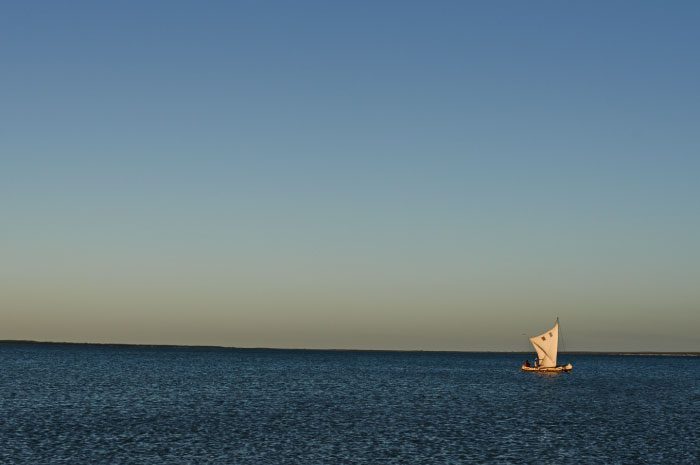
Traditional pirogue sailing in Velondriake LMMA | Photo: Ben McMahon
Malagasy law is set up to give communities the rights to design and implement local rules called Dina. These rules form the core component of all LMMAs in Madagascar, and are the first point of call for applying management rules such as no take zones, gear restrictions, or temporary fishery closures at the community level.
So given all this, why did the communities in Velondriake want to go the extra mile to become a formal protected area?
While Dina is a very powerful tool at the community level, it is at the bottom of the hierarchy in terms of legal power. Communities are powerless to exclude interests such as industrial fishing and aquaculture, coastal development and the extractive industries through Dina. Formal protected area status for Velondriake will form the basis of decisions about development in the area, putting the rights of traditional fishers, and the protection of the natural environment first.
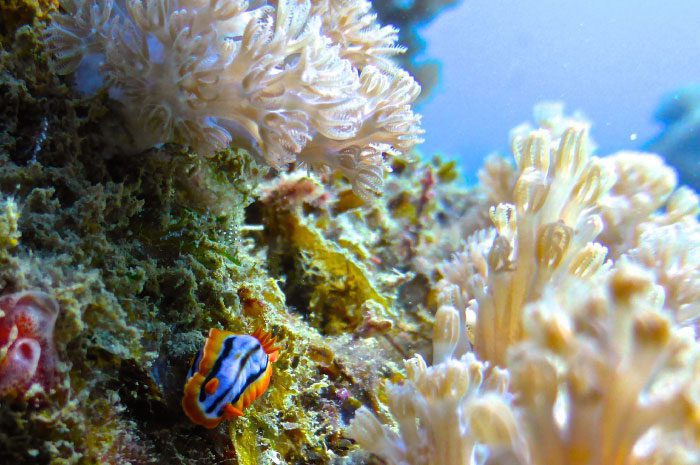
Nudibranch in Velondriake LMMA | Photo: Lisa Benson
On top of the legal support, MPA status will help to put Velondriake firmly on the map as a new model of community-led marine management.
As Roger Samba, president of the Velondriake Association put it:
Obtaining protected area status] will protect our livelihoods, and it paves the way for our children who will have more support in managing these resources in the future. It will also increase the number of visitors who pass through, from government officials, to NGOs, to tourists, which in turn will increase the number of jobs and sustainable sources of income, improving quality of life here.
LMMAs in the limelight
The designation of these MPAs comes at a time when marine management occupies a place of unprecedented prominence on Madagascar’s environmental policy agenda. Just as the “Durban Vision” set out at the World Parks Congress (WPC) in 2003 defined community management of protected areas as the major focus of conservation efforts for a decade in Madagascar, so the “Promise of Sydney” announced by Madagascar’s President at the 2014 WPC places community management of marine resources centre stage for the next decade. In an ambitious announcement, President Hery Rajaonarimampianina committed to tripling the coverage of marine protected areas, and cited LMMAs as an approach to follow.
“We have positive models by which to chart our course. We look to successful examples of locally managed marine areas [LMMAs], of which Madagascar is proud to be a pioneer in the Western Indian Ocean region.” President Hery Rajaonarimampianina
Earlier this year Madagascar’s environment ministry added a new division focusing on marine affairs to reflect this new focus.
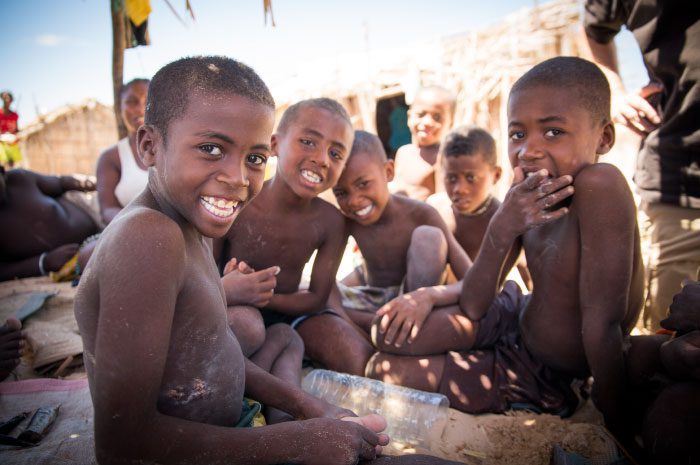
Local children, Velondriake | Photo – Gabriel Diamond
What’s next?
It’s incredibly exciting to see LMMAs gaining this broad support from community to government levels. We are witnessing unprecedented momentum to expand these management efforts, on the part of the government and a range of partners.
But while growth in coverage and political support are hugely encouraging, the credibility and durability of Madagascar’s new marine protection movement depends on these LMMAs being successful, both for coastal livelihoods and biodiversity conservation. There are still many challenges to overcome in this mission, including the weak capacity of most communities to manage protected areas, tremendous practical difficulties in enforcing Dina in remote areas, underlying severe poverty, poor livelihood options beyond fishing, and unmet health needs of the populations within LMMAs. Alongside these challenges, Blue Ventures and our partners are striving to identify viable models for effective sustainable financing of LMMAs – without which communities will struggle to find the means to finance marine management efforts without outside support.
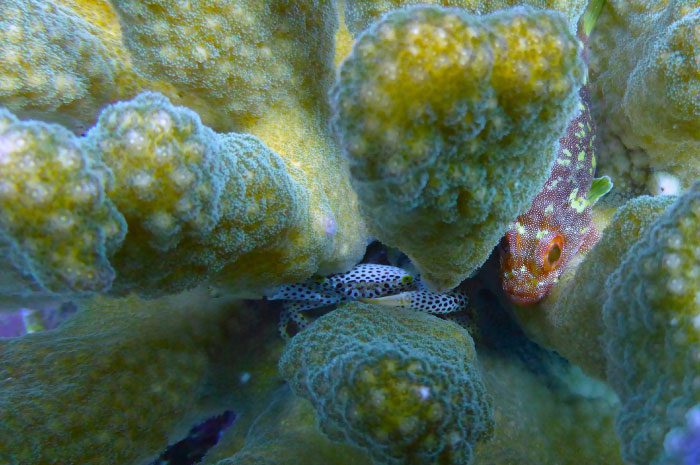
LMMA’s can be hugely important for biodiversity | Photo – Lisa Benson
[Tweet “We should also be wary of pushing a one-size-fits-all approach to marine conservation in Madagascar.”]
We should also be wary of pushing a one-size-fits-all approach to marine conservation in Madagascar. The MIHARI network is linking up coastal communities to share very diverse experiences of setting up and managing LMMAs. We are richer as a learning network for these experiences, and should continue to work together to support the development of a range of models that place coastal communities in the driving seat.
The idea of closing off fishing grounds for a period of time seemed absurd to most people. But now we understand and trust in it. Now we’re lost without it.When the news came through, Tovoson, a representative of the village of Ampasilava, within the Velondriake LMMA, proudly told us: “[Getting definitive protection] shows how far we’ve come. When we first started back in 2003 there was no association, just a bunch of motivated community members from a few villages who saw to protect our resources. There have been a lot of difficulties, […] but we’ve not been discouraged. For instance, when we first started, the idea of closing off fishing grounds for a period of time seemed absurd to most people. But now we understand and trust in it. Now we’re lost without it. But it hasn’t been easy getting here, we’ve kept up our efforts and stayed motivated. So it’s wonderful to be recognized for that.”

